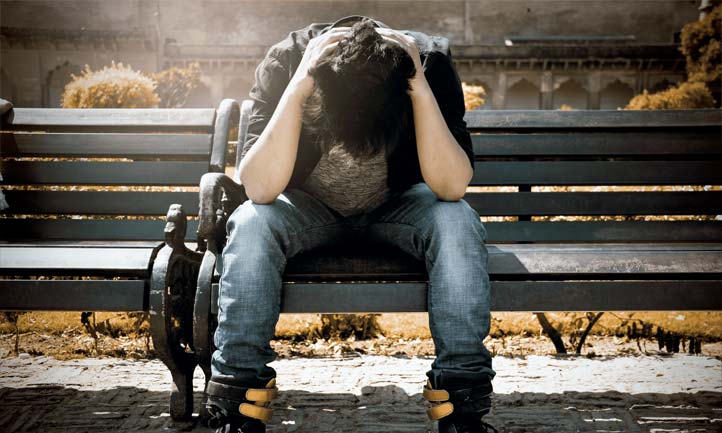Good vs. Bad Pain
Author: Emily Munoz
Finding Power and Purpose through the Hurt
We know that pain is uncomfortable, but can it also be a good thing?
A useful thing?
Pain can be a valuable teacher. But as much as we may learn from it, we may also feel compelled to avoid it. It takes tremendous emotional energy to constantly have to come to terms with how much has gone awry. How much should we wrestle with how hurt we are, and how much should we surrender?
 Photo courtesy Inzmam Khan, Pexels
Photo courtesy Inzmam Khan, Pexels
What is pain?
Pain is a signal, an alert that we should be careful, that we are in a vulnerable position. Physically, we experience pain when the brain senses tissue damage. Emotionally, the course of action is more complicated, but it’s not entirely neurologically different. We have, essentially, the same system for interpreting all kinds of pain, whether it’s the anguish of bereavement or the ache of a lower back.
We experience social or emotional pain when connection to our tribe is threatened. From an evolutionary standpoint, psychological pain forces us to assess actual or potential social problems. It’s also a way for you to signal to your tribe that you need help.
The brain may initially register the pain of a grieving heart and the pain of a physiological experience in the same way, but the effects of each type of pain on the brain are different. Emotional pain leaves a different mark on the brain, which enables us to empathize with each other and build community. When we experience pain together, as in our TAPS family, it serves another purpose — to unite us at our time of highest vulnerability. If your pain is keeping you away from others, if it’s isolating you and keeping you from community, that may be one indication that your pain is truly hurting more than helping. What, then, are other ways that we can determine whether or not we’re experiencing discomfort that’s destructive rather than constructive? How do we know whether our pain is teaching us or limiting us?
What is your pain trying to tell you?
Pain is predominantly information. Yes, it’s uncomfortable and distressing, but it’s also one of the body’s most effective means of communication. If you’re not listening, then you’re hurting for no reason. True suffering occurs when we can’t figure out how to turn pain into purpose.
Pain is either an indication that something has changed or that something needs to change. If pain is the only thing you hear, it may be time to listen to the urges to heal. These may be quiet and tentative because we have so many imposed barriers that tell us that healing is forgetting. We know differently, though. In early grief, pain can be deafening — and there will always be times that it drowns out all other sensation. However, it shouldn’t be the only thing you are experiencing. If the pain is all you can think about, then you may be moving into a situation where you’re not able to access other coping skills. It may be time to renegotiate your relationship with pain, especially trying to figure out why you’re hurting so much.
Where is the pain coming from?
When we stub a toe, the toe sends signals to the brain. The brain evaluates what’s happened (how did that coffee table get there?!?) and, using a variety of clues and signals, we feel pain in the toe. Although the brain is responsible for the feeling of pain, the cause and effect occur in the same location — the toe — and pain is a marker of the injury. Identifying the source becomes complicated when body pain isn’t limited to one area, or when its origin isn’t physical at all.
Emotional pain, too, is often traceable to an experience. Learning to name and identify pain for what it is, and for why things hurt, can help you do for your spirit what the nervous system does for the body. Tracing the origins of what makes you feel worse and what makes you feel better can help you take some of your power back.
Are you finding power or purpose in your pain?
“Good” pain is pain that reminds us what’s important — it still hurts in the moment, but the experience of it is worthwhile. Growing pains and grieving pains are both powerful — yes, they feel terrible, but they also remind us that productive pain is expansive — we break open.
When we’re hurting, we want to make ourselves small — to hide, contract, disappear, run from it, or stuff it down. Of course, there will be times when that is necessary, but the amount that you’re doing is a good indication of whether or not your pain is making you stronger. Pain that’s confronted — pain that’s addressed — is pain that you’ve begun to burn as fuel for your journey. Does it mean that it’s gone? No. But it does mean that you understand it and can learn to work with it and work through it. We want to avoid moving toward a state where pain takes hold such that we can’t stop doing certain things and we can’t start doing others.
 Photo courtesy Evan Krause, Unsplash
Photo courtesy Evan Krause, Unsplash
How will I know if my pain is constructive or destructive?
If you are intentionally causing pain to yourself or others, this is usually not the kind of pain that is productive or kind. If you are using pain as a distraction, the focus is on the wound and not on the healing. Pain then becomes the objective rather than the means.
Constructive pain is pain that, while uncomfortable, promotes healing. Are you growing and learning from pain? It hurts to have to try to let go of how life was and how life could have been; it’s also difficult to know that there is no easy answer, no cure. We know that the accompanying demands on the nervous system (hypersensitivity to stress, conflict, noise, etc.) also add to feelings that life is out of control. This means that hurt can also feel like panic and anxiety, regardless of how much healing takes place, there will always be something that’s lost and that can never be replaced. As we build lives without our loved ones, though, we integrate them into what we’re doing and who we’re becoming.
Pain, at its very heart, is intolerable discomfort. The limit of how much you can endure will change over time. This isn’t because you’re “getting over” anything; it just means that you’re adapting to do what you’re supposed to do — survive. It doesn’t mean that you love or miss the person any less, it’s just an indication that you have learned to find power and purpose in what hurts the most.
Signs that the Way You're Hurting isn't Helping
- You are having trouble identifying how and why pain changes
- You’re suffering, but you’re not finding a way to express that you’re hurting
- You are using pain as a distraction
- You aren’t able to breathe through it
- You are unable to control your reactions to pain
- The pain keeps you stuck
- You haven’t sought care for emotional wounds that could be healed
- You use pain as an excuse to avoid things that could enrich your life.
Emily Muñoz is the Director, TAPS Women’s Empowerment and the surviving spouse of Captain Gilbert A. Munoz, U.S. Army
